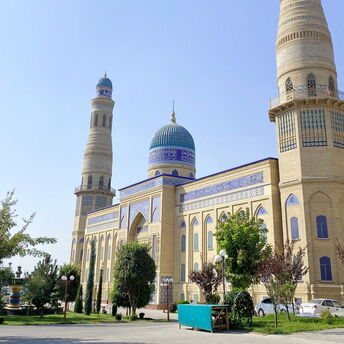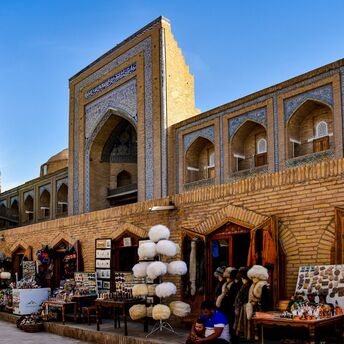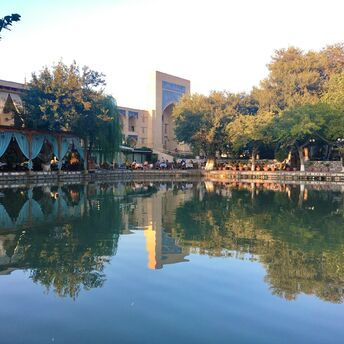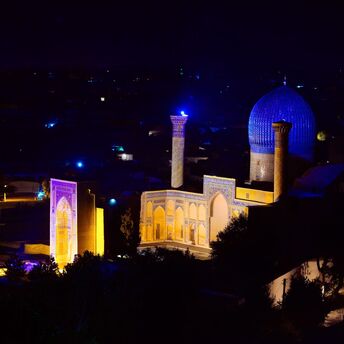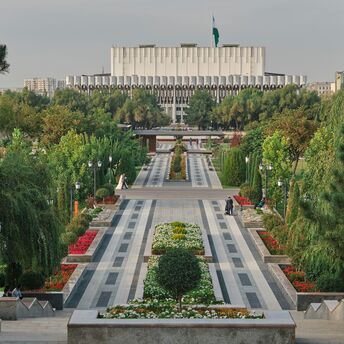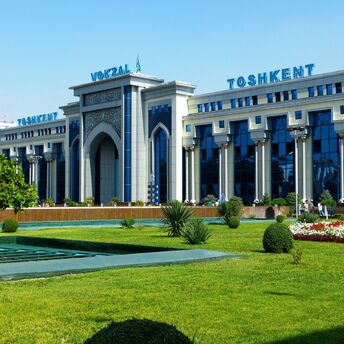Ark Fortress: A Symbol of Power and Survival in Bukhara
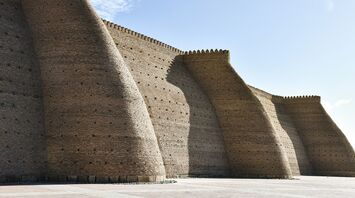
The Ark Fortress, towering above the historic city of Bukhara, has stood as a commanding symbol of power for centuries. Once the royal residence of the emirs of Bukhara, this massive structure has witnessed both the splendor of the Silk Road and the trials of invasions. Today, it remains one of the most significant landmarks of the city, reflecting the long and eventful history of the region.
The Ark Fortress, believed to have been built in the 5th century AD, served as more than just a military stronghold. It was the political and cultural heart of Bukhara, housing the emir’s palace, government offices, mosques, and various administrative buildings. Layers of history are embedded in its walls, revealing the grandeur and complexity of Bukhara’s royal court.
The fortress, rising on a man-made hill, is notable for its impressive fortified walls and massive gates, which have withstood numerous invasions and natural disasters. These walls, some sections of which reach up to 20 meters in height, were designed to protect the ruling class and the city’s elite from external threats. Over the centuries, the Ark became a symbol of stability and authority, even as the world around it changed.
Historical Legacy and Turbulence
While the Ark's foundation dates back to antiquity, it was during the reign of the Samanid dynasty (9th–10th centuries) that the fortress reached its peak of influence. It continued to serve as the center of Bukhara’s power throughout the following dynasties, including the Shaybanids and Manghits. For centuries, the Ark embodied the wealth and influence of the emirate, but it also bore witness to tragedy and turmoil.
In 1920, during the Bolshevik invasion, the Ark was heavily bombed, marking the end of the Emirate of Bukhara. This tragic event left a significant part of the fortress in ruins, yet many sections of the Ark remain preserved, allowing visitors to step back in time and imagine the opulence of the past.
Architectural Wonder and Visitor Experience
Despite the damage sustained over the years, the Ark Fortress still showcases remarkable architectural features. As visitors approach the grand entrance, they are greeted by the imposing Coronation Hall, where the emirs would hold court and address their subjects. Beyond this, the fortress opens up to reveal a maze of rooms and courtyards, each telling its own story of Bukhara’s rulers and their lives within these fortified walls.
For modern-day travelers, visiting the Ark offers an opportunity to delve into Bukhara's rich political history. Walking through the fortress, one can explore the ancient mosques, the emir's harem, and the offices of government ministers. The Ark Museum, located within the fortress, provides detailed insights into the cultural and political history of Bukhara, with exhibitions showcasing artifacts from the emirate’s past.
A Timeless Monument to Resilience
The Ark Fortress stands as a reminder of Bukhara’s resilience in the face of historical upheavals. It continues to draw visitors from around the world, offering them a glimpse into the political and architectural evolution of the region. For centuries, the fortress has been a silent witness to the rise and fall of empires, and today, it invites exploration of its grand halls and hidden corners.
